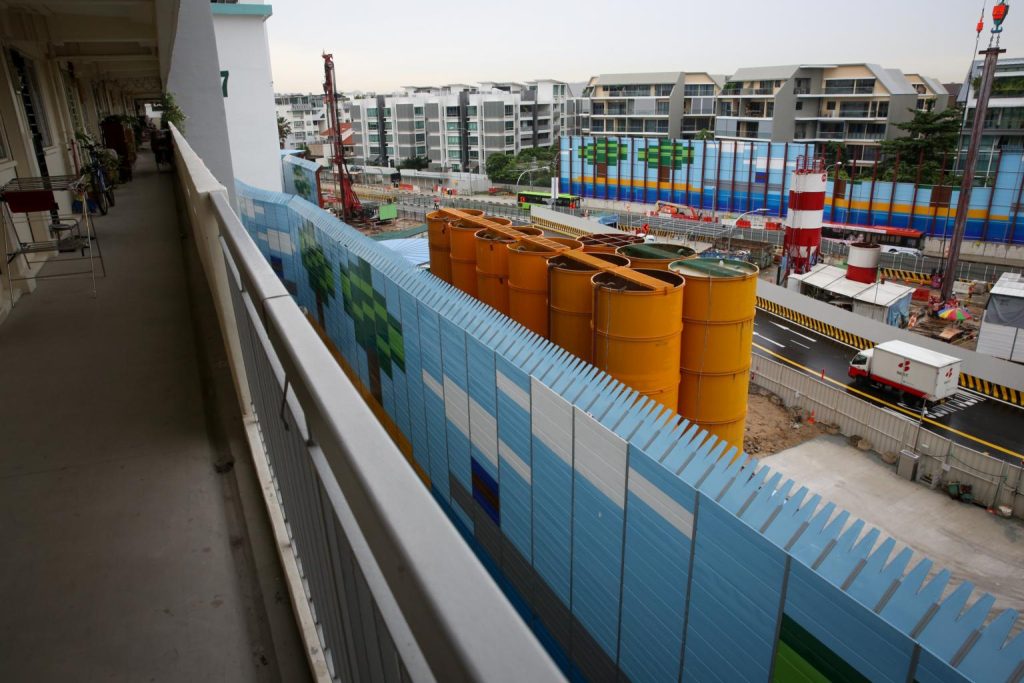
Singapore is famous for its efficiency, order, and ambitious urban planning. As the city-state grows denser and more connected, noise pollution has become an increasingly pressing issue. To tackle this, Singapore has been investing heavily in sound barriers—those tall structures you see along expressways and MRT tracks. But this raises a critical question: are we putting too much faith (and funding) into these structures, or are they a necessary part of a broader, sustainable approach to noise control?
Let’s dive into what Singapore’s sound barrier strategy looks like, what it’s trying to solve, and whether it’s enough—or even too much.
The Rise of Sound Barriers in Singapore
Sound barriers aren’t new, but Singapore’s use of them has ramped up significantly in recent years. Along major roads, you’ll find a growing number of concrete or acrylic panels designed to block traffic and construction noise from spilling into nearby residential areas.
Why the sudden push? One major reason is public feedback. Singaporeans value peace and quiet. With the island’s compact geography and dense urban development, even a minor increase in decibels can stir frustration. The government, responsive as ever, has answered with kilometre after kilometre of sound shielding.
From new MRT lines like the Thomson-East Coast Line to the expansion of expressways, sound barriers made in Singapore are now a standard part of infrastructure planning. The Land Transport Authority (LTA) has even trialled vertical green noise barriers to merge function with form—absorbing noise while improving aesthetics and, potentially, air quality.
The Case For Sound Barriers
At first glance, it’s hard to argue against sound barriers. They do what they’re built to do: reduce ambient noise levels. Studies show that well-designed barriers can cut noise by 5 to 10 decibels. In urban acoustics, that’s a noticeable improvement.
Here are some legitimate benefits:
- Immediate Relief for Residents: People living near highways or elevated train tracks report significant improvements in noise levels once barriers go up.
- Targeted Solution: Barriers can be deployed in known high-noise zones—there’s no guesswork.
- Quick Wins: Compared to long-term urban planning changes, barriers are relatively fast to build and politically popular.
- Modular and Scalable: Need more coverage? Extend the panels. Want to test something new? Trial it on a single site before scaling.
Singapore’s government has leaned into these advantages. With rising demand for housing, some developments are now closer than ever to busy infrastructure. Barriers help make these locations liveable.
But… Are They the Best Long-Term Fix?
That’s where things get tricky.
Sound barriers, while effective in specific scenarios, are a reactive solution. They don’t eliminate the source of the noise—they just try to block it. Over-reliance on them could signal a missed opportunity to pursue more forward-looking and sustainable noise management strategies.
Here are a few reasons for concern:
- Visual and Physical Clutter: The urban landscape can start to look boxed in and lifeless. Barriers—especially the concrete kind—can be an eyesore.
- Limited Effectiveness in Dense Environments: Noise reflects off buildings and other surfaces. Barriers may not stop these reflections from reaching further down the street or higher floors.
- Cost and Maintenance: Some barriers, particularly those incorporating greenery or specialised materials, are expensive to install and maintain. Is this the best use of public funds in the long run?
- Displacement of Noise: In some cases, barriers can redirect noise to unintended locations, shifting the problem rather than solving it.
What Else Could Singapore Be Doing?
To Singapore’s credit, sound barriers are just one part of the toolkit. But critics argue that more emphasis should be placed on reducing noise at the source and thinking more holistically.
Here are several complementary strategies that are worth exploring or expanding:
1. Quieter Vehicles and Infrastructure
Electric buses, trains, and service vehicles are naturally quieter than their diesel counterparts. Investing in low-noise tyres, smoother road surfaces, and quieter rail systems can all contribute to a lower baseline noise level.
Singapore has already begun electrifying its bus fleet and experimenting with noise-dampening rail tracks. But there’s room to accelerate these efforts.
2. Zoning and Smart Urban Design
Rethinking how we position schools, housing, roads, and commercial areas could reduce the need for barriers in the first place. Mixed-use developments should incorporate acoustic planning from the ground up, using building layouts, green buffers, and strategic setbacks to minimise noise spread.
3. Green Infrastructure
Living walls, trees, and urban forests can absorb and diffuse sound, while also improving air quality and aesthetics. Some cities are integrating these into parks, roadside verges, and building exteriors as part of broader noise control measures.
Singapore’s “City in a Garden” vision aligns with this. But are we fully leveraging green space as a noise buffer?
4. Public Awareness and Behavioural Shifts
Noise doesn’t just come from traffic and trains. Leaf blowers, late-night renovations, car horns, and loudspeakers contribute too. Public education campaigns can help cultivate more considerate behaviours, especially in densely packed HDBs and condominiums.
International Comparisons: Are We Ahead or Catching Up?
Globally, cities like Amsterdam, Tokyo, and Copenhagen have taken multi-pronged approaches to noise. These include stringent noise regulations, smart city acoustic monitoring, and extensive use of electric public transport.
Singapore is not falling behind, but it’s also not outpacing the leaders in sustainable noise innovation. If anything, we’re somewhere in the middle: efficient, responsive, but still favouring reactive solutions over deeply integrated urban acoustics.
So, Is the Investment in Sound Barriers Too Much?
It depends on what lens you’re looking through.
If your apartment overlooks an expressway, sound barriers may be the best thing that ever happened to your sleep cycle. For you, they’re not “too much”—they’re overdue.
But from a systemic perspective, they are a short-term fix. Singapore is excellent at execution, but true urban resilience demands that we look beyond stopgaps.
The better question might be: Are sound barriers a stepping stone or a crutch?
Conclusion: A Balanced Path Forward
Singapore doesn’t need to choose between sound barriers and smarter, long-term strategies. The key is balance. Sound barriers work—but they should complement, not replace, a broader plan.
If Singapore continues to invest in quieter technology, green design, thoughtful zoning, and public engagement, alongside barriers, we’ll be on the right track. Not just to a quieter city, but a more thoughtful, inclusive, and sustainable one.
So yes, we may be investing a lot in sound barriers. But the real measure of progress is whether we’re investing in silence—or just silencing complaints.





